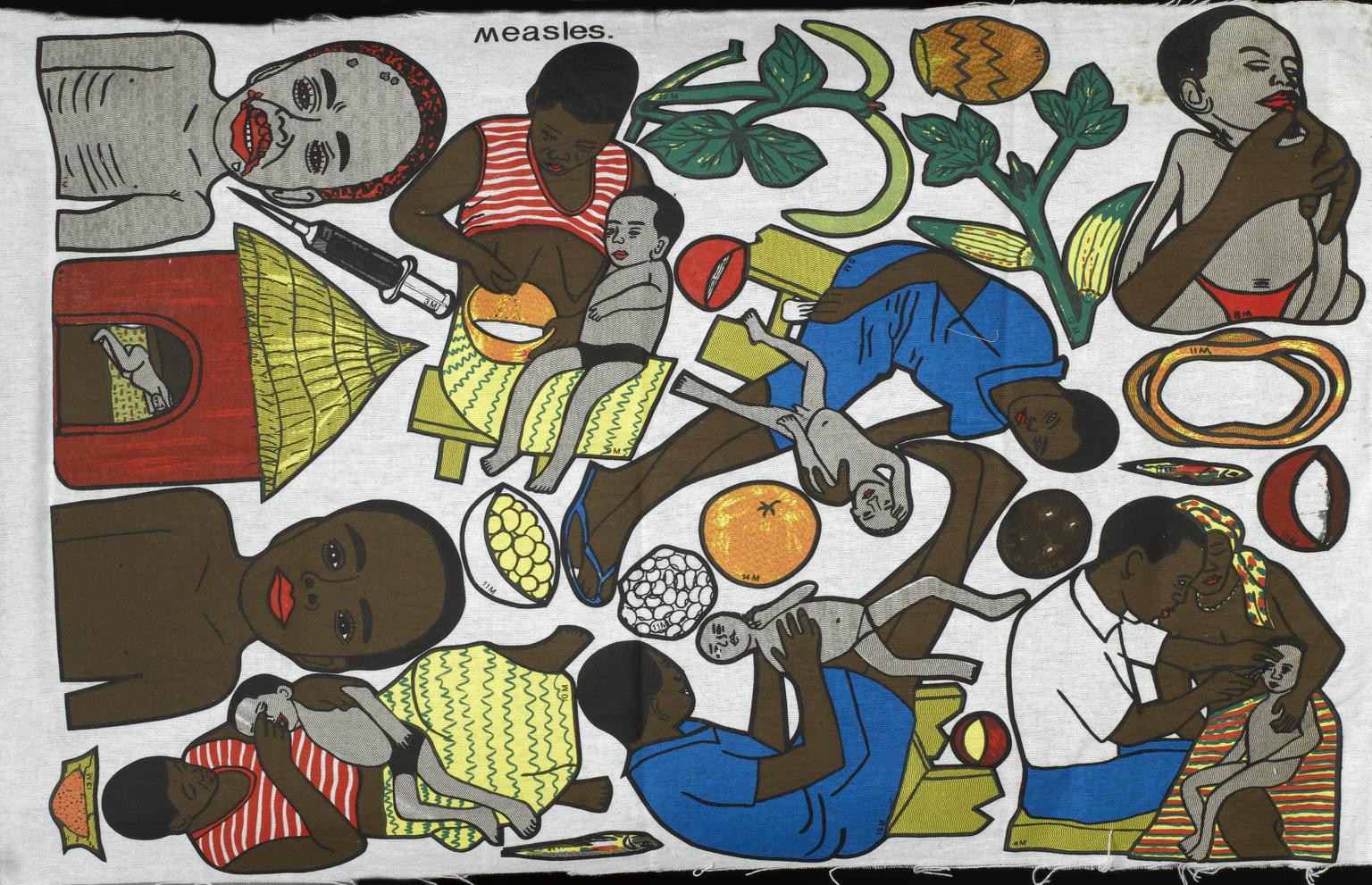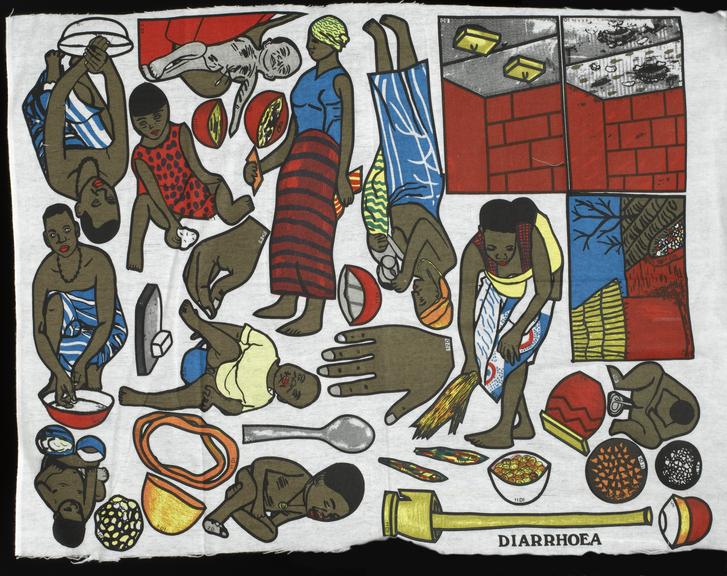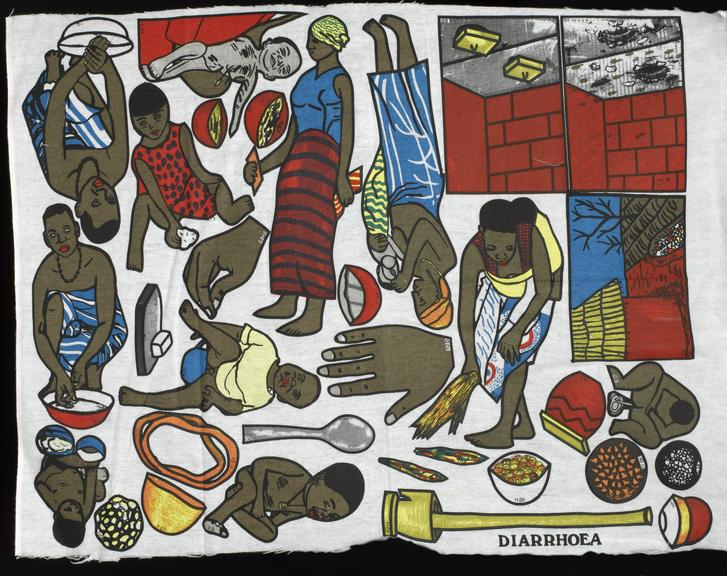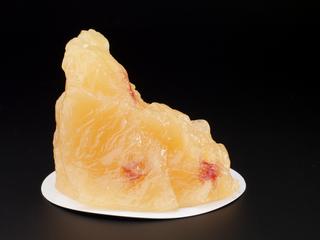
Flannelgraph on measles, England, 1992
Nutrition and Child Health Flannelgraph on measles, no. 1 out of 7 sheets of illustrated cloth to cut out and detailed instructions, for health education teaching at village level in Africa, by TALC (Teaching Aids at Low Cost), St. Albans, England, 1992
More
Flannelgraphs can be used to teach people about public health issues regardless of how well they can read and write. By using pictures and public discussion, the audience learns how to recognise the symptoms and signs of measles. They are also taught to prevent measles by vaccination and how to care for a person with measles. The health worker is given a script with questions to encourage discussion. Questions include “What signs do we see when a child has measles?” Flannelgraphs are a useful tool as they are easy to transport, quick to set up, re-useable and adaptable to the direction of the discussion.
The flannelgraph is made by TALC (Teaching Aids at Low Costs), founded in 1965 by Professor David Morley to distribute teaching aids to improve health care worldwide.
- Measurements:
-
overall: 592 mm x 900 mm .06kg
- Materials:
- flannelgraph, cloth
- Object Number:
- 1992-896/1
- type:
- flannelgraph
- Image ©
- The Board of Trustees of the Science Museum











